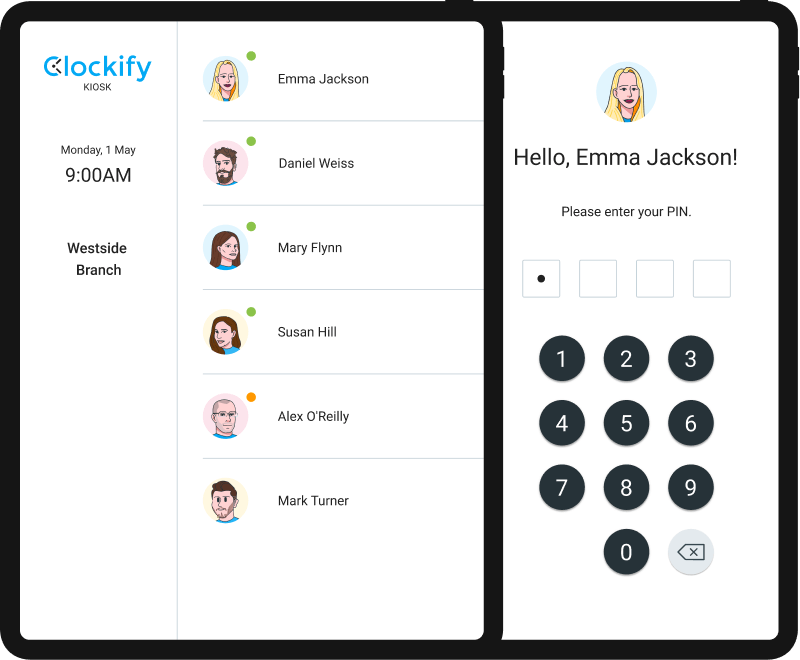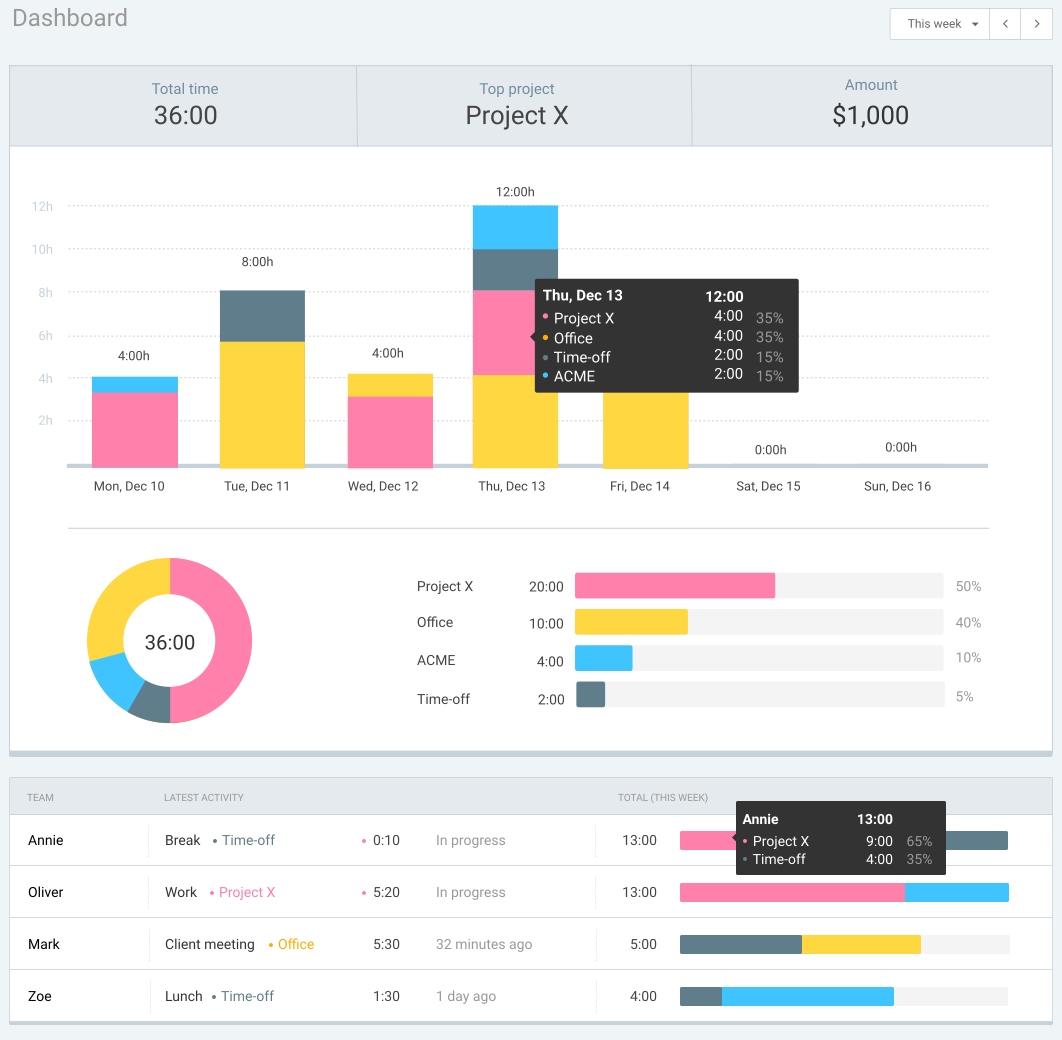Behind every successful 24/7 business, there is an excellent work schedule that enables everything to run smoothly.
If you want to increase the productivity and satisfaction of your employees, you should try using one of the most efficient rotating work schedules — the DDNNOO schedule. Using this rotating schedule, you will save your employees from burnout and fatigue, even though they might be working long-hour shifts.
In this blog post, you will learn about:
- The DDNNOO work schedule and how it works,
- The advantages of the DDNNOO work schedule,
- The disadvantages of the DDNNOO work pattern, and
- Tips on how to implement the DDNNOO work schedule.

Table of Contents
What is the DDNNOO work schedule and how does it work?
The acronym DDNNOO stands for:
- Two day shifts (DD),
- Two night shifts (NN), and
- Two days off (OO).
This rotating schedule provides 24/7 coverage with two 12-hour shifts and 3 teams — two teams always on duty during one day and the third team is off during that day.
The DDNNOO work schedule has a 6-day cycle rotating between:
- Two day shifts,
- Two night shifts, and
- Two days off.
After one cycle ends — after six working days — the schedule starts again.
For example, if the first cycle starts on Monday, the next cycle will start on Sunday. Each shift is 12-hour long.
Industries that use the DDNNOO schedule are:
- Manufacturing,
- Hospitals,
- Emergency services,
- Police force,
- Restaurants, and
- Transport services.
💡 Clockify Pro Tip
If you need help managing your restaurant, we present 10 restaurant management apps in our blog post:
What are the advantages of the DDNNOO work schedule?
As an efficient work pattern, the DDNNOO schedule comes with a number of benefits. Here are some of the most common ones.
Advantage #1: Fewer shift handovers
The process of transferring responsibility between shifts from one employee to another is called a shift handover.
How do shift handovers occur in the DDNNOO schedule? Well, in this work pattern, there are 3 teams that work 12-hour shifts, thus, there are fewer employees working hence fewer shift handovers occur. Operating a business with fewer teams and 12-hour shifts reduces the possibility for miscommunication between teams.
Also, when working in fewer shifts, employees remain efficient as they can work continuously on the same project without interruptions or leaving it for the next day. Focusing on one project at a time and having fewer workers involved means more quality work done on time. Moreover, fewer handovers equal fewer problems and overall continuity in communication and working.
Hospitals, which usually operate 24/7, may be a great example to explain how the DDNNOO functions in real-life. If, for instance, three doctors were scheduled to work 8 hours each, all of them would have to be informed about the states of their patients and everything that happened outside their shifts. This would take too much time, and the chances are that someone will make a mistake.
But, if you have two doctors scheduled to work for 12 hours each, then only two of them need to be informed about the events. These two doctors will work in two 12-hour shifts, so they will spend more time with their patients and know more about their conditions.
Consequently, the doctor from the first shift will spend less time updating the medical staff and the other doctor from the next shift, on the therapy and other important information. Furthermore, the chances for miscommunication and errors are reduced. This is beneficial for the organization and leads to increased productivity.
Advantage #2: Flexibility and fewer chances of burnout
The DDNNOO work schedule offers your employees more flexibility with their time. Since the DDNNOO is a rotating shift schedule, the workers are not time-bound as nine-to-five employees. According to a survey, 66% of shift employees confirmed that flexibility is the #1 advantage of working in shifts.
Having a flexible schedule allows them to make arrangements, go shopping, and make appointments with the doctors even during work days, avoiding peak hours and crowds.
Furthermore, the flexibility of the DDNNOO schedule and varied days off reduce the chances of employee burnout. According to another survey, 63% of employees who are affected by burnout are likely to call in sick. Also, there are as many as 2.6 times more chances that they will be looking for a new job.
Advantage #3: Fewer costs
As we have already mentioned, the DDNNOO work pattern requires only 3 teams working 12-hour shifts.
That being said, the number of employees is reduced, and with that, so are the labor costs. The DDNNOO is a very cost-effective work schedule that requires fewer employees but at the same time provides 24/7 operation.
Advantage #4: More opportunities for learning
If you use the DDNNOO work schedule, your employees can have more opportunities for learning. This is a rotational shift schedule, so your employees will work different shifts that require diverse skills.
As a result of the day and night shifts, employees will work on various tasks and develop new skills. In this way, one employee will learn opening and closing procedures, dealing with customers, etc. It is advantageous for the company and individuals to continue acquiring knowledge and growing in their field.
What are the disadvantages of the DDNNOO work schedule?
On the other hand, there are certain cons that come with implementation of the DDNNOO work schedule. Let’s see some of them.
Disadvantage #1: Irregular salary
One of the disadvantages of the DDNNOO work schedule is that employees’ income may vary from month to month.This is especially difficult for hourly employees working in shifts, because their work includes both day and night shifts, which means that they won’t get paid equally for both shifts. That’s because night shifts are usually paid more. Consequently, employees’ salaries are quite unpredictable. This can make it hard for employees to plan their finances.
Disadvantage #2: Possible problems with labor regulations
The DDNNOO work schedule is a specific work pattern, and as the labor law differs from country to country, you need to be careful when incorporating this work pattern.
You have to take into account minimum wage laws, overtime laws, and breaks because the DDNNOO schedule includes working for 12 hours, night shifts, and weekend work. For example, if the labor law of the country in which your company is located prescribes specific rules regarding work breaks, you will need to incorporate those rules into your schedule.
Moreover, if your company operates in different countries, you need to adapt your business to labor laws of those countries. You will have to check the labor law provisions in each country to make sure that your business is legally compliant.
Disadvantage #3: Increased possibility of errors and injuries
For employees who work rotating shifts, as in the DDNNOO work schedule, staying alert and focused can be difficult — especially when they work night shifts. According to a recent study, the risk of making work-related errors is higher at night because employees get tired, and 13% of injuries at the workplace are caused by fatigue.
How does shift working affect our productivity?
This study shows how shift working hinders our biorhythm, reduces sleep quality, and causes mood disorders resulting in poor quality performance and productivity at work. That’s why the DDNNOO employees must take all the necessary precautions and get enough sleep.
Disadvantage #4: Fatigue and commuting
As we already said, the DDNNOO work pattern includes 12-hour shifts, which can be quite exhausting for workers. Employees need to be focused and active for 12 hours and use public transport, but some of them also drive home. This can take quite some time — especially for those who commute long distances every day.
So, employees may be away from home for more than 12 hours, depending on how far they are from work, which means that they will be too tired during their leisure time.
It is very difficult to commute home after a long shift because they are tired, especially for those who drive. The situation is even worse when they have night shifts. Employees have to fight the urge to fall asleep behind the wheel. This can be incredibly dangerous for them, so the DDNNOO work schedule must be carefully implemented and planned out.
💡Clockify Pro Tip
If you want to find out more about advantages and disadvantages of other work schedules, read our blog posts:
How to implement the DDNNOO schedule?
Implementing the DDNNOO work schedule can be challenging sometimes so we have prepared some tips on how to use it in the best way possible.
Tip #1: Improve shift handover
Shift handovers are important processes and have to be handled carefully. When handing shifts over, teams need to communicate transparently and effectively, and pass important information between them. This is especially important for complex and high-risk jobs such as:
- Construction work,
- Police force,
- Health care,
- Emergency services,
- Aviation, and
- Engineering.
Miscommunication can negatively affect and slow down the working process. If you are a shift manager, it is important to inform your employees beforehand about all the updates and changes that may have occurred during the previous shift.
According to a study, structured shift handovers in hospitals improved the quality of work and communication between staff members.
What can help you make this process more efficient, consistent, and accurate are schedule templates so that all the tasks and activities are organized and transparent.
Furthermore, clocking in and out from work can be simplified by using a time clock kiosk. It ensures a smoother transition between teams by using a phone or a tablet at the entrance of a company. This makes all the necessary information available at your fingertips.

Tip #2: Create an easily accessible and editable schedule
One of the crucial things to do as a manager is to create an easily accessible and editable schedule so that you can quickly make any necessary changes, if needed.
What can help you do this is employee scheduling software where you can:
- Schedule employees,
- Have a better overview of their projects, and
- Track their time.

Apart from tracking time, you can easily make changes in the schedule, projects, or tasks.
For example, one of your employees calls in sick, and you need to find a replacement. If you have an overview of all of your employees and their current tasks and schedules, you will be able to quickly find a cover.
Or maybe you have a new project, and you want to find the most skilled employees available to take over the job. In this case, project scheduling software will make your job much easier, as you will have an insight into everyone’s current work tasks.
💡 Clockify Pro Tip
One of the benefits of tracking time is that it helps you organize your schedule. If you want to find out more about time tracking in project management, read our blog post:
Tip #3: Provide healthy and balanced meals for your employees
Many studies have recently shown that shift workers are more likely to develop metabolic syndromes such as obesity, high cholesterol, increased triglycerides, and heart diseases. This usually happens due to disrupted eating and sleeping cycles, unbalanced diet, and overeating.
Since the DDNNOO employees spend 12 hours a day at work, you should provide healthy and balanced meals, so they can recuperate their strength, focus better on their tasks, and minimize the negative effects of shift work.
Conclusion: Increase employee satisfaction and productivity by using the DDNNOO work schedule
An efficient work schedule maximizes employee productivity while prioritizing their health and satisfaction. That’s why the DDNNOO work pattern is one of the best 24/7 schedules you can find.
In this article, we’ve presented some of the advantages of this work pattern such as:
- Fewer shift handovers,
- Flexibility, and
- Fewer chances of burnout.
We’ve also listed some of the most useful tips on how to implement the DDNNOO work pattern and how to get the most out of it. Some of the ways to do so are:
- Improving shift handover,
- Creating an easily accessible and editable schedule, and
- Providing healthy and balanced meals.
We hope you find this blog post useful and that it will help you make your business successful when using the DDNNOO work schedule.



